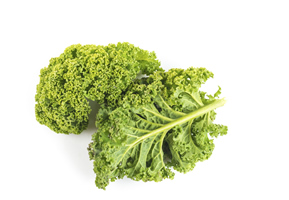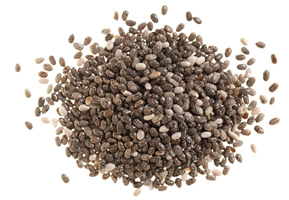What are SUPERFOODS? The Ultimate Guide

All credit goes to Emma Thornton
What are superfoods?
Superfoods are a diverse collection of nutrient-rich natural foods such as berries, seeds, grains, algae, vegetables and fruits, which can have a positive effect on your body. They contain a large percentage of vitamins, minerals, enzymes, amino acids and antioxidants. Unlike most healthy foods, which normally contain two or three particular nutritional properties, superfoods often have 12 or more.
Why are superfoods important?
The modern diet is often not as nutritious as it should be. There is an abundance of unhealthy foods available, which are often easier to prepare and quicker to eat than their healthy counterparts. However, unhealthy eating is not good for your body, your skin, your hair and your immune system - it even impacts your emotional state. Whereas a daily diet that includes superfoods gives your body everything it needs to run smoothly and stay healthy.
The benefits of superfoods
Each superfood has its own specific characteristics and offers some typical health benefits. Improving physical and mental health, strengthening the immune system and increasing resistance to disease are some of the basic qualities of superfoods. They provide energy and help make you feel better about yourself. Superfoods are also known for burning calories, because they improve your metabolism. Also, the rejuvenation of the skin is another advantage of superfoods, thanks to the antioxidants and vitamin C that they contain. They also help reduce the risk of cancer and protect your heart.
Defining superfoods
The name ‘superfoods’ has come over from America, This collective name for these foods makes it easy to put them under a single heading – super healthy foods. In the European Union only products whose positive characteristics - vitamins, minerals, good fats, enzymes - are proven may carry the name ‘Super Food’.
The list of superfoods is extensive. To keep things simple, they are divided into 4 different categories. In each category you will find the widest possible list of the healthiest (and best known) superfoods!
Green superfoods
These are the green vegetables, which contain high concentrations of vitamins, proteins, minerals and healthy bacteria, such as wheat grass, barley grass, spirulina, chlorella, and green leafy vegetables such as lettuce, spinach, kale and winter purslane. Leeks, broccoli and legumes (for example peas, beans and lentils) also belong here.
Fruits & nuts superfoods
Many fruits and nuts have beneficial properties that help in killing (bad) bacteria. The main ones are acai berries, blueberries, cranberries, goji berries, mulberries, pomegranate, maqui berry, maca, almonds, walnuts, raw cacao and coconut.
Herb superfoods
Among these superfoods you can find healthy herbs which are packed full of vitamins. Moreover, many have special medicinal properties such as nettle, aloe vera, echinacea, ginseng, devil's claw, ginger, ginkgo biloba, marigold, turmeric, anise and basil.
Other superfoods
Products derived from bees, such as bee pollen, honey and royal jelly are among the other superfoods. There are also a wide variety of seaweeds that are considered superfoods.
8 superfoods & what makes them so super
The list of superfoods is extensive, but we have picked eight of them to look at more closely and explain what makes them so super:
1. Acai berry Sweet acai berries have a purple colour and resemble ordinary blueberries.
Sweet acai berries have a purple colour and resemble ordinary blueberries.
The berry is bursting with antioxidants, rich in potassium and fibre and contains a large amount of vitamin C. This helps the berry give you energy, provide a better sleep cycle and it is heart healthy.
2. Goji berries This berry (also known as Wolfberry) contains natural anti-aging agents, which can help to delay the ageing process. In addition, this berry contains a lot of vitamin C and supports the immune system. Goji berries also provide for a healthy heart and they have a protective effect on the liver.
This berry (also known as Wolfberry) contains natural anti-aging agents, which can help to delay the ageing process. In addition, this berry contains a lot of vitamin C and supports the immune system. Goji berries also provide for a healthy heart and they have a protective effect on the liver.
3. Blueberries These delicious berries are full of phytonutrients that neutralize free radicals (agents that cause aging and cell damage). High in anti-oxidants, vitamin C and K, iron and manganese, blueberries are also low in saturated fat, sodium and cholesterol. Blueberries have been found to improve the balance of cholesterol levels by lowering bad cholesterol and increasing good cholesterol, promote good blood pressure levels, improve memory and benefit eye health.
These delicious berries are full of phytonutrients that neutralize free radicals (agents that cause aging and cell damage). High in anti-oxidants, vitamin C and K, iron and manganese, blueberries are also low in saturated fat, sodium and cholesterol. Blueberries have been found to improve the balance of cholesterol levels by lowering bad cholesterol and increasing good cholesterol, promote good blood pressure levels, improve memory and benefit eye health.
4. Kale This delicious leafy green is full of powerful vitamins, minerals and antioxidants, offering 113% of your daily intake of vitamin A and almost 90% of your daily vitamin C intake. More nutritious than spinach, kale also contains more iron per calorie than red meat and it is high in fibre, which is great for promoting good digestive health.
This delicious leafy green is full of powerful vitamins, minerals and antioxidants, offering 113% of your daily intake of vitamin A and almost 90% of your daily vitamin C intake. More nutritious than spinach, kale also contains more iron per calorie than red meat and it is high in fibre, which is great for promoting good digestive health.
5. Coconuts The humble coconut packs a powerful nutritional punch. As well as its unique combination of ‘healthy’ fatty acids, which can have a positive effect on health, coconuts are also a rich source of minerals, including copper, zinc, iron, magnesium, phosphorus, potassium and selenium.
The humble coconut packs a powerful nutritional punch. As well as its unique combination of ‘healthy’ fatty acids, which can have a positive effect on health, coconuts are also a rich source of minerals, including copper, zinc, iron, magnesium, phosphorus, potassium and selenium.
Each of the different food products extracted from the coconut fruit provides different nutritional goodness. The flesh of the fruit is a good source of the B-vitamins and potassium, while coconut oil is one of the healthiest oils available, high in lauric acid, a type of fat which promotes good cholesterol and lowers bad cholesterol.
6. Hemp seed Hemp seed is beneficial for the heart and brain. It is a complete protein and contains omega-3 and omega-6 fatty acids. Hemp seeds also contain minerals such as calcium, magnesium, sulphur, copper, potassium and phosphorus. Raw hemp seeds are also bursting with antioxidants, B vitamins, vitamin D and vitamin E.
Hemp seed is beneficial for the heart and brain. It is a complete protein and contains omega-3 and omega-6 fatty acids. Hemp seeds also contain minerals such as calcium, magnesium, sulphur, copper, potassium and phosphorus. Raw hemp seeds are also bursting with antioxidants, B vitamins, vitamin D and vitamin E.
7. Chia seed These little seeds are bursting with vitamins, minerals, fibre and protein. Thanks to these good nutrients, Chia seeds reduce the risk of osteoporosis, are good for heart and blood vessels, improve bowel movement and help slow down ageing. By adding Chia seeds to your diet, you quickly feel satisfied, and therefore this can help towards weight management.
These little seeds are bursting with vitamins, minerals, fibre and protein. Thanks to these good nutrients, Chia seeds reduce the risk of osteoporosis, are good for heart and blood vessels, improve bowel movement and help slow down ageing. By adding Chia seeds to your diet, you quickly feel satisfied, and therefore this can help towards weight management.
8. Chlorella This little green detoxifier is probably the most powerful of its kind. It is a single-celled freshwater alga with super-properties. One of the few edible species of water-grown algae, chlorella is packed with chlorophyll, which is loaded with antioxidant power.
This little green detoxifier is probably the most powerful of its kind. It is a single-celled freshwater alga with super-properties. One of the few edible species of water-grown algae, chlorella is packed with chlorophyll, which is loaded with antioxidant power.
Chlorella also contains all of the B vitamins, vitamin C, vitamin E, beta-carotene, amino acids, magnesium, iron, fibre, trace minerals, carbohydrates and a higher amount of protein (more than 50%) than meat, per grams of weight
How do I eat superfoods?
If you want to eat superfoods, it is essential to consume foods in their raw and original state. This is important as, in modern processing, many nutritional and healing qualities are limited or indeed lost completely.
If cooking superfoods, it’s important not to overcook them. High heat can damage delicate water-soluble vitamins such as vitamin C and destroy antioxidants that reside in the pigments of plant based foods.
You can eat superfoods at any time of the day. Here is what a daily diet with superfoods can look like:
Breakfast: Almond milk with oats and pieces of dark chocolate and a few chopped walnuts
Lunch: A toasted spelt bun with tomato slices, olive oil and a little garlic, topped with sprouted seeds
Dinner: Broccoli, spinach or kale with legumes, together with a good portion of quinoa.
Snacks: A green apple, an orange, blueberries or a handful of walnuts

Comments
0 Comments